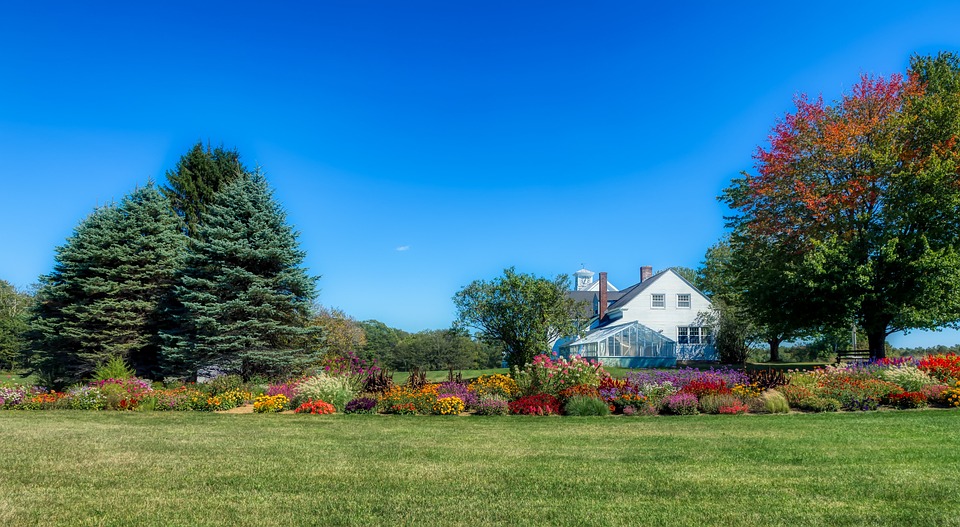Growing Green: Tips and Tricks for Sustainable Garden Design
There’s nothing quite like the feeling of tending to a garden and watching it flourish. As someone who has spent years living off the grid and is passionate about sustainable farming and gardening, I’ve learned a thing or two about designing and maintaining a green, thriving garden. Whether you’re a seasoned gardener or just starting out, there are a few key tips and tricks that can help you create a sustainable garden that not only looks beautiful but also benefits the environment. In this article, I’ll share some of my favorite techniques for growing green and creating a sustainable garden design that you can be proud of.
Choosing the Right Plants
One of the most important aspects of sustainable garden design is choosing the right plants for your climate and soil. When selecting plants for your garden, opt for native species that are well-suited to your location. Native plants are adapted to the local environment and require less water, fertilizers, and pesticides to thrive. Additionally, native plants provide essential habitat and food sources for local wildlife, making them an important part of a sustainable garden ecosystem.
Pro Tip: Consider incorporating a mix of flowering plants, herbs, and vegetables to attract pollinators and beneficial insects to your garden.
Water Conservation
Water is a precious resource, especially when living off the grid, so it’s important to design your garden with water conservation in mind. Choose drought-tolerant plants that require minimal watering, and consider implementing water-saving techniques such as mulching, drip irrigation, and rainwater harvesting. By maximizing water efficiency in your garden, you can reduce your environmental impact and save valuable resources.
Pro Tip: Group plants with similar water needs together to create efficient watering zones in your garden.
Companion Planting
Companion planting is a sustainable gardening technique that involves growing different plants together to benefit each other. By pairing certain plants together, you can naturally enhance soil fertility, deter pests, and maximize space in your garden. For example, planting aromatic herbs like basil and rosemary alongside vegetables can help repel pests and attract beneficial insects. Additionally, companion planting can create a diverse and vibrant garden that supports a healthy ecosystem.
Pro Tip: Research companion planting combinations that are well-suited to your climate and garden space for optimal results.
Soil Health
Healthy soil is the foundation of a successful garden, and sustainable garden design involves nurturing and enriching the soil for long-term productivity. Implementing organic gardening practices, such as composting, cover cropping, and minimal tillage, can improve soil structure, fertility, and biological activity. By building healthy soil, you can reduce the need for synthetic fertilizers and pesticides, while increasing the resilience of your garden.
Pro Tip: Test your soil annually to monitor nutrient levels and pH, and adjust your gardening practices accordingly.
Wildlife Habitat
Creating a sustainable garden isn’t just about growing plants – it’s also about supporting the local wildlife that depends on it. Incorporating features such as bird feeders, bat houses, and pollinator-friendly plants can help attract and support a diverse range of wildlife in your garden. By providing food, water, shelter, and habitat for wildlife, you can contribute to the conservation of biodiversity and ecological balance in your area.
Pro Tip: Research native plants that are specifically beneficial to local wildlife and incorporate them into your garden design.
Sustainable Garden Design in Action
As someone who has spent years living off the grid, my sustainable garden design has been an ongoing project that continues to evolve and improve. By using these tips and tricks, I’ve been able to create a thriving garden that not only provides an abundance of fresh produce but also contributes to the health of the environment. Whether you’re growing food for self-sufficiency or simply enjoy the beauty of gardening, sustainable garden design is a rewarding and fulfilling endeavor that benefits both people and the planet.
In conclusion, sustainable garden design is an important aspect of creating a green, thriving garden that supports the environment and local wildlife. By choosing the right plants, conserving water, practicing companion planting, nurturing soil health, and supporting wildlife habitat, you can create a sustainable garden that flourishes for years to come. As someone who has experienced the joys of sustainable gardening, I encourage you to explore these tips and incorporate them into your own garden design for a greener, more sustainable world. Happy gardening!



